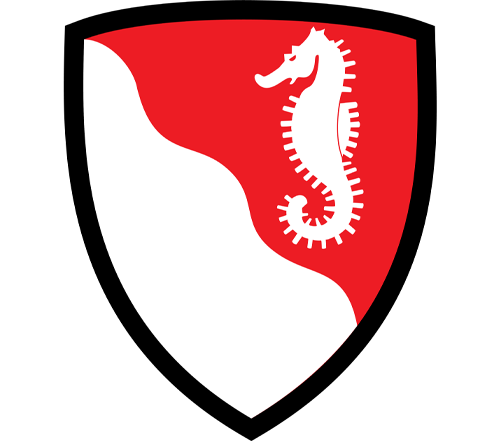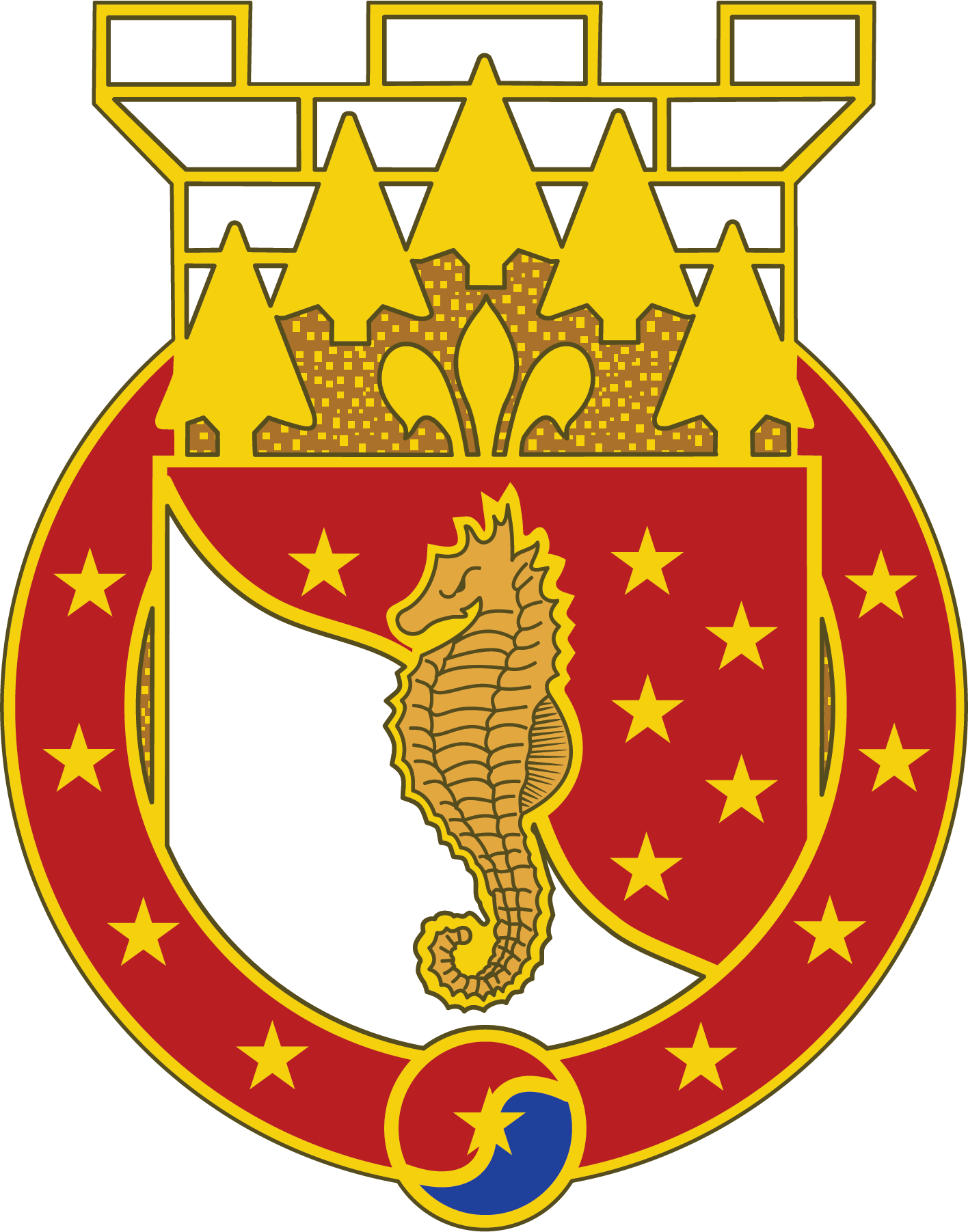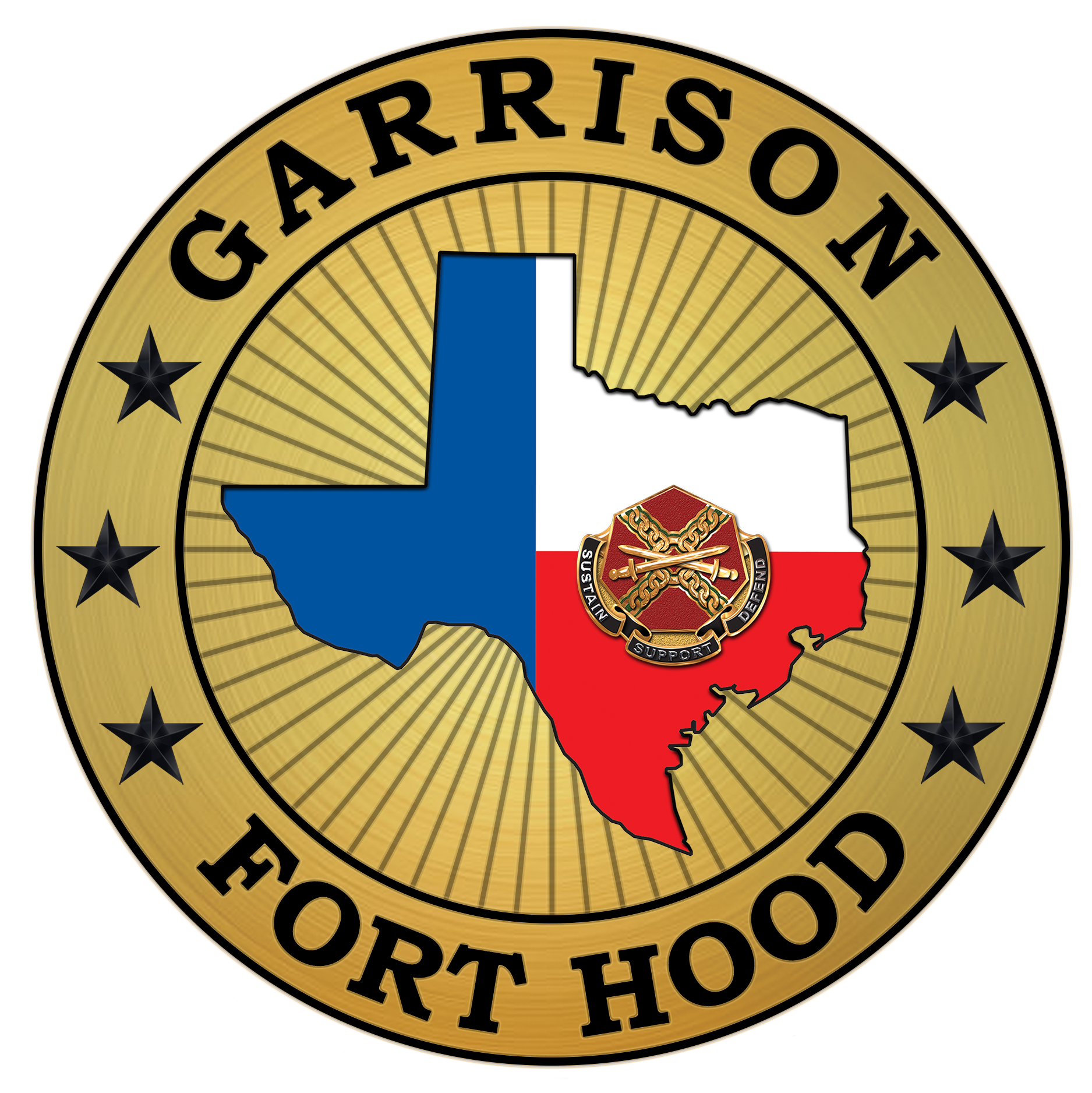36TH ENGINEER, THE RUGGED BRIGADE!
The 36th Engineer Brigade was activated on 1 June 1941 at Plattsburg Barracks, New York as the 36th Engineer Regiment. Since then, the unit has served with distinction York as the 36th Engineer Regiment. Since then, the unit has served with distinction during almost every major conflict, including World War II, the Korean War, the Gulf War, Operation Iraqi Freedom, Operation Enduring Freedom and Operation New Dawn.
During World War II, the 36th Engineer Regiment consisted of nine combat engineer companies trained for amphibious assault and support operations. The regiments' proud companies trained for amphibious assault and support operations. The regiments' proud history as one of the first engineer units to fight using amphibious tactics is mirrored in the unit's distinctive insignia, a seahorse on a red and white shield, proclaiming the prowess demonstrated during its five amphibious assault landings at Algeria-French Morocco, French Morocco, Sicily, Naples-Foggia, Anzio, and Southern France.
On 15 February 1945, the unit was re-designated as the 36th Engineer Combat Group, and following World War II it reorganized at Fort Lewis, Washington. During the Korean the 36th Engineer Combat Group consisted of four engineer battalions and four additional engineer companies that were responsible for maintaining roads and bridges.
Following the Korean War, the 36thth Engineer Group remained in Korea conducting construction operations in support of the ROK Army throughout South Korea until 1972.
The unit inactivated on 30 May 1972 in Korea and reactivated on 1 July 1973 as the 36th Engineer Group (Construction) at Fort Benning, Georgia, assuming command of the 937th Engineer Group and assisting TRADOC’s Maneuver School of Excellence with engineer support. In 1986, 36th Engineer Group participated in a joint training operation in Costa Rica called Camino de la Paz.
During the 1991 Gulf War, the 36th Engineer Group (Construction) fought in support of the 24th Infantry Divisions' rapid attack to the Euphrates. The unit also deployed in support of peace enforcement missions during Operation Continue Hope in Somalia and Operation Uphold Democracy in Haiti.
The 36th Engineer Group (Construction) has twice deployed to Iraq in support of Operation Iraqi Freedom, executing a wide variety of construction missions in support of combat operations, including the construction of enemy prisoner of war camps, theater convoy support centers, and Soldier life support areas.
On 16 June 2006, the unit was re-designated the 36th Engineer Brigade and reassigned to Fort Hood, Texas as the United States Army’s first modular engineer brigade headquarters. The unit has deployed several times to both Iraq and Afghanistan in support of national requirements.
In 2014, 36th Engineer Brigade was called on for Operation United Assistance combating the Ebola Virus in Liberia and in 2019, the Rugged Brigade served as a Task Force Headquarters during Operation DOD Support to Border Security. TF Rugged was responsible for the fortification border fence on the US-Mexico border.
More recently, the brigade has participated in a Corps War Fighter exercise, Operation Resolute Castle, Defender Europe, Operation Allies Welcome, and the Defense CBRN Response Force (DCRF) missions.
The 36th Engineer Brigade colors carry 34 streamers, many earned in combat while reorganized as infantry, including service at Anzio where, for forty-five days, Soldiers wearing the seahorse shoulder patch held 7 miles of the front line and earned the distinction by the Germans as "The Little Seahorse Division".
INSIGNIA ORIGIN & MEANING
 Shoulder Sleeve Insignia: The original design for the 36th EN Regiment insignia was made in 1941 and despite a lack of approval from the War Department, 36th Soldiers wore the patch on uniforms and displayed the insignia frequently in various forms during WWII. The Germans called the 36th EN’s “The Little Seahorse Division” while on the front line serving as infantry and also since it was rare for a regiment to have its own shoulder sleeve insignia. Divisions at the time were mainly the only units with unique shoulder sleeve insignia.
Shoulder Sleeve Insignia: The original design for the 36th EN Regiment insignia was made in 1941 and despite a lack of approval from the War Department, 36th Soldiers wore the patch on uniforms and displayed the insignia frequently in various forms during WWII. The Germans called the 36th EN’s “The Little Seahorse Division” while on the front line serving as infantry and also since it was rare for a regiment to have its own shoulder sleeve insignia. Divisions at the time were mainly the only units with unique shoulder sleeve insignia.
During the Korean war, the patch was rarely worn since it was technically not approved for wear and since the Group was comprised of many different subordinate units that were not organic to 36th. In many photos from the Korean era to the year 2005, 36th EN Group Soldiers are seen wearing either no unit patch or the higher headquarters patch. 36th fell under IX Corps originally and then was placed under I Corps while in Korea. After 36th returned to the states they frequently wore FORSCOM patches. The shoulder sleeve insignia did not see a resurrection in use until the late 1980’s when WWII veterans of 36th began hosting reunions and sharing the Regiments history with the 36th EN Group leadership. Multiple requests were made but approval would not be granted for the wear of the current Shoulder sleeve insignia until 2005.
 Distinctive Unit Insignia: The distinctive unit insignia (DUI) was designed after the 1953 armistice in Korea. The DUI contains symbolism for the unit history. 5 arrowheads and 10 battle stars for the amphibious landings and campaigns in WWII, the scarlet scroll charged with 9 stars and bearing a Taeguk in the colors of Korea symbolizes the units two meritorious unit citations, the Republic of Korea Presidential Unit citation and the unit’s nine campaigns in Korea. The scarlet and white backdrops with the seahorse represents the original legacy of 36th Engineers. This insignia bearing the seahorse was more widely used in Korea than the shoulder sleeve insignia.
Distinctive Unit Insignia: The distinctive unit insignia (DUI) was designed after the 1953 armistice in Korea. The DUI contains symbolism for the unit history. 5 arrowheads and 10 battle stars for the amphibious landings and campaigns in WWII, the scarlet scroll charged with 9 stars and bearing a Taeguk in the colors of Korea symbolizes the units two meritorious unit citations, the Republic of Korea Presidential Unit citation and the unit’s nine campaigns in Korea. The scarlet and white backdrops with the seahorse represents the original legacy of 36th Engineers. This insignia bearing the seahorse was more widely used in Korea than the shoulder sleeve insignia.







